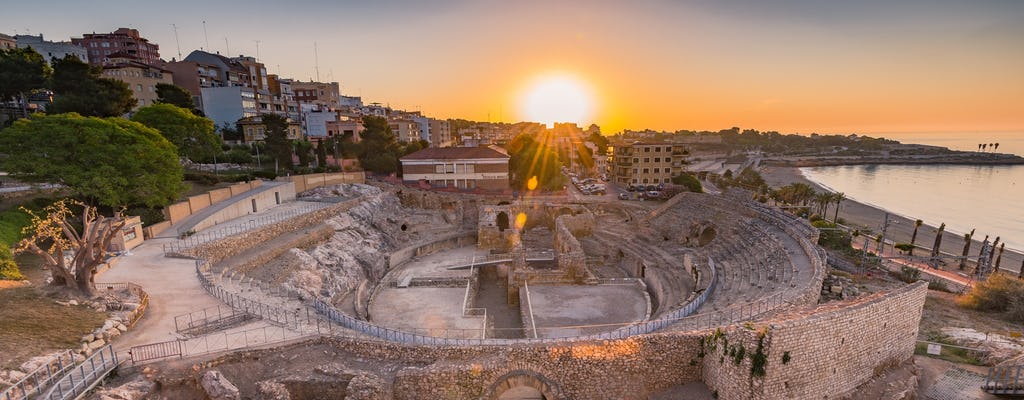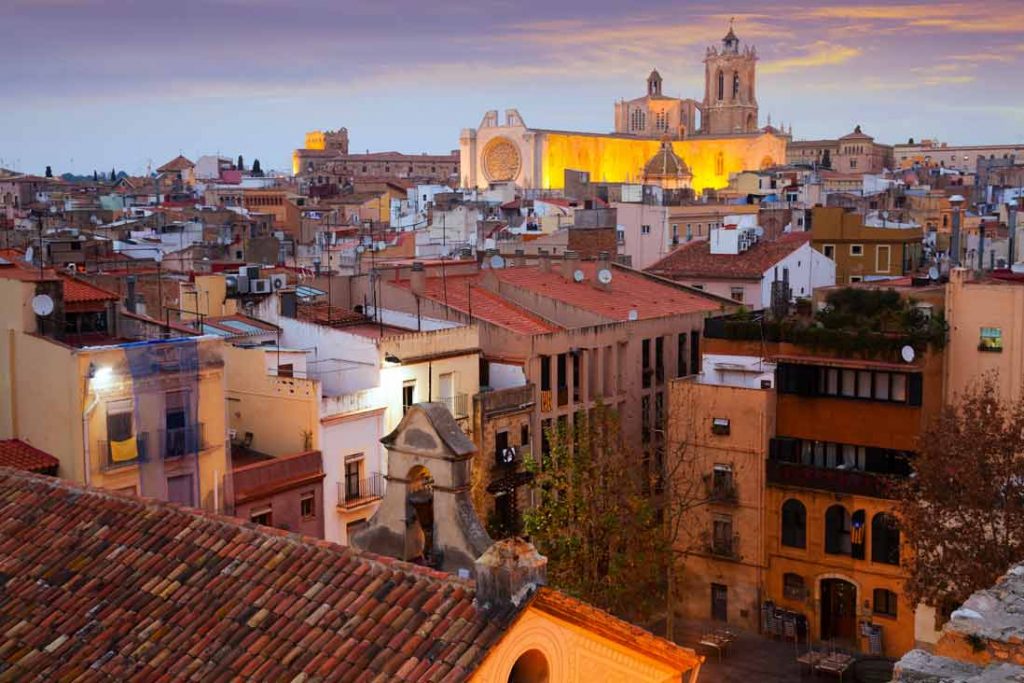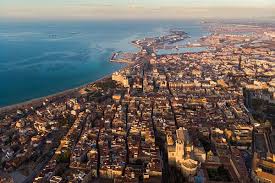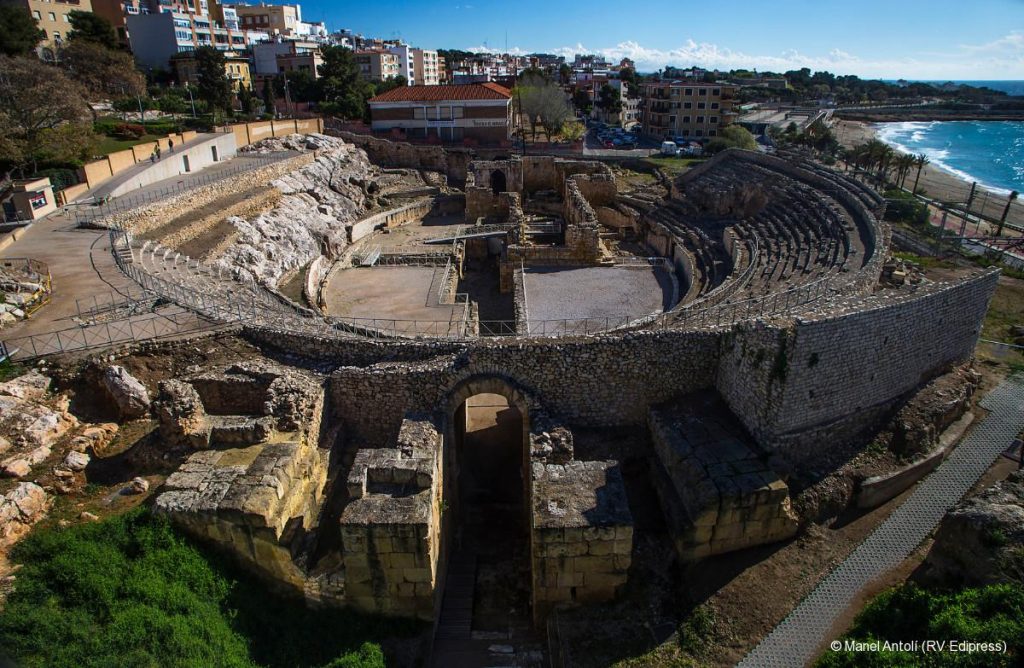Tarragona, an ancient city with many pleasant aspects, not too far from Barcelona, which often takes all the limelight, is a place to visit for many reasons. Located on the Costa Dorada, it is characterised by white sandy beaches and crystal clear waters; a perfect combination for a summer holiday of relaxation and fun. It’s not just the scenery that dominates this part of Europe, history also deserves a special mention here. Discovering the ancient vestiges of a glorious past will make the visitor proud to have chosen one of the most spectacular locations in the country. There are not many places that have such a large number of monuments concentrated in such a small space as Tarragona.
With 155,000 inhabitants, the city is one of the most popular destinations in the Mediterranean area and has been since antiquity, as evidenced by the ancient archaeological ruins throughout the area.



The Romans raised it to the status of a Hispanic province under the name of Terraconensis (then called Tarraco), making it one of the wealthiest areas on the west coast. The Phoenicians probably founded the city some time ago, and according to historical records the origins of the city date back to the Second Punic War (Pliny testified that Tarragona was founded by the Scipios).
Tarragona; one of the most popular cities in Catalonia
Today, tourists identify it as the first seaside town south of the major city of Barcelona, a place renowned for its slower and more relaxing pace than the great capital of Catalonia.
Tarragona is often favoured for its summer atmosphere and the natural beauty of its sea, natural parks and Mediterranean-style gardens scattered throughout. Cafés and tapas bars complete the picture of a truly unmissable location for anyone planning a trip to Spain.
Visit the Tarragona Roman Amphiteatre
The city’s glorious past is encapsulated in several well-preserved buildings. The most important landmark, and major tourist attraction, is the Roman Amphitheatre, a place that has led the archaeological complex of Tarragona to be inscribed on the UNESCO World Heritage List (as you can see from the photo on the left, this is a truly majestic site). We find it lying on the sea, off Rambla Nova, close to what used to be the Augustan Way, at the foot of the Miracle Park and visibly embedded in a cliff rising from the coast…imagine what a view could have been admired here by the ancients who gathered in their leisure time during the 2nd century. The plan of the structure was elliptical, with an extension of just over 109 metres and a width of 86.50 metres. The archaeological Citadel of Tarragona is in fact the central pulpit of this beautiful Spanish town. It is impossible not to admire the Roman walls, built in the 2nd and 1st centuries B.C., which still today stand out with all their authority, 6 metres high and a total thickness of over 4 metres; it is impossible not to recognise the towers of the same walls, named after Minerva, Sant Magí, the Archbishop, the Seminary and Cabiscol, which are still richly decorated with bas-reliefs and Latin inscriptions. The Provincial Forum is another important Roman structure that has survived to the present day and was built around 70 AD, during the rule of Emperor Vespasian. The Circus, the Roman Theatre and the Forum of the Colony, in addition to other smaller structures, complete the panorama.

Tarragona’s Sorroudings
The city’s surroundings are worth visiting, not only for the beautiful nature present, but also for several buildings of historical and cultural importance. Among them is the Monastery of Poblet, founded in 1151 by Raymond Berengar IV and used for the burial of the kings of Aragon. Inside, beautiful buildings, an exceptional alabaster retable, arbours and royal tombs.
Visit Tarragona: 12th Century Cathedral
Adding to the long list is the 12th century Cathedral (Seu), whose structure marks the architectural evolution from Romanesque to Gothic and whose façade is of incredible aesthetic grandeur. The Gothic portal is composed of numerous sculptures depicting 23 apostles, the Virgin Mary with Child and the Last Judgement, while the large rose window is often compared to that of more famous churches, such as Notre Dame in Paris. In the apse is the altarpiece of Santa Thecla, patron saint of Tarragona, sculpted by Pere Joan in 1430. In the east gallery is the Museum of the Diocese, with a fine collection of sacred art. We also recommend that you do not miss the cloisters inside the church (dating from 1214), which we preferred for its particular architectural atmosphere, refined and at the same time intimate.At the end of Pallol del Pla, a portico indicates the road toPasseig Arqueol, a walk along the ancient fortifications. It was built by the Romans on top of colossal boulders and offers breathtaking views, making it one of the favourite vantage points in the whole region.
Tarragona Museum’s
The city’s museums include the National Archaeological Museum (Museu Nacional Arqueològic), which also includes the Necropolis and the Early Christian Museum, as well as the archaeological sites of Centcelles and El Munts, and the Museum of the History of Tarragona, located in the beautiful 15th century Gothic Palace of Cadtellamau.
There is a nice walk after the coastline, about 6-7 km long, where the five main beaches and several small bays are located. Many of them have been awarded the Blue Flag, an award given by the FEE (Foundation for Environmental Education) to coastlines of particular environmental interest.
Tarragona City Events
The events of the city and its province are numerous, mostly related to festivals of religious origin, the most important of which are: The Cavalcade of the Kings, with a procession of the Three Wise Men; Carnival, with masquerades and dances held by His Majesty and his Concubine; the Dixieland Festival, the week before Holy Week (one of the most important events in Europe) and full of concerts and various events; Holy Easter; St John’s Night, with firecrackers and fireworks; and the Neighbourhood Festivals.
Throughout the summer, there is a succession of patron saint’s festivals in the different boroughs; a fireworks competition in the first week of July; and the National Day of Catalonia (11 September).
Tarragona is a city for expatriates?
More and more expatriates are choosing to live in Tarragona or the surrounding area, as the weather is good most of the year, it is very close to Barcelona and has a high speed train station.
Besides Tarragona, the prices of buying a property are much cheaper than in other places like Barcelona for example. If you want to retire in Spain, Tarragona can be the ideal place if you want to get a golden visa or a non-lucrative visa.